Dealing with a wound can be stressful, and it’s even more frustrating when your wound dressing, especially gauze, gets stuck! If you’ve ever experienced gauze sticking to your wound, you know it can be uncomfortable and concerning. This article is your go-to guide for understanding why gauze sticks, how to safely remove gauze stuck to a wound, and how to prevent it from happening again. We’ll walk you through step-by-step methods to ensure safe and effective wound care, so you can promote healing and avoid unnecessary pain. Keep reading to learn how to handle this common wound care challenge and ensure your wound heals properly.
1. Why Does Wound Dressing Gauze Get Stuck to Wounds?
Have you ever wondered why gauze is stuck to your wound when you try to remove the dressing? It’s a common problem in wound care, and understanding the reason behind it can help you prevent it and manage it better. The main culprit is the nature of gauze itself and how wounds heal. Gauze is made to be absorbent, which is great for soaking up blood and wound fluids. However, this absorbency can become a double-edged sword.
When gauze is placed directly on the wound, especially an open wound, the gauze is highly absorbent and starts to soak up the wound exudate. As the wound begins to dry and heal, new wound tissue starts to form. The fibers of the gauze can then become entangled with this new tissue and the dried wound fluids, creating an adhesion between the gauze and the wound bed. Think of it like Velcro – the small fibers of the cotton gauze grip onto the wound as it heals, causing the gauze to stick. This gauze adhesion is more likely to happen with traditional cotton gauze that isn’t treated with a non-stick coating. This is why gauze from sticking is a frequent concern when using standard gauze pads.
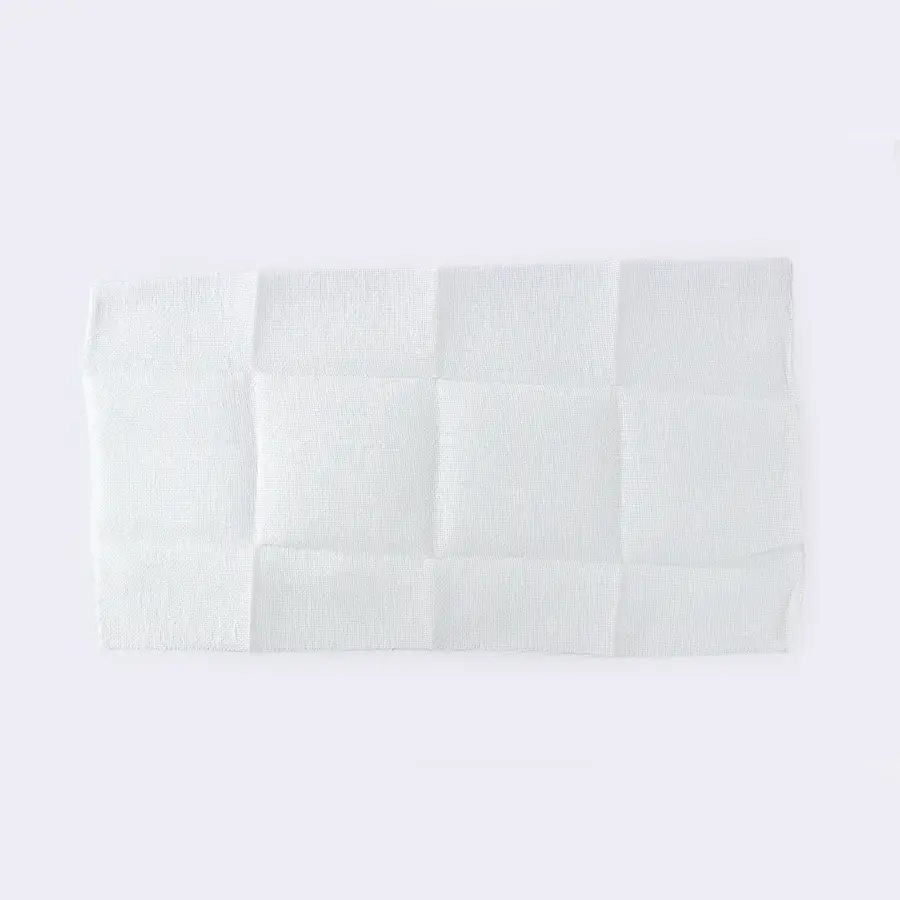
The absorbent fibers of cotton gauze can easily become entangled with wound tissue.
2. Step-by-Step Guide: How to Safely Remove Gauze Stuck to a Wound
When you find gauze stuck to a wound, your first instinct might be to just pull the gauze away. However, attempting to remove stuck gauze forcefully can be painful and damage the wound, potentially reopening the wound or causing further injury. Instead, a gentle approach is key. Here’s a step-by-step method to remove gauze stuck safely:
-
Assess the Situation: Take a look at how firmly the gauze is stuck. If it seems lightly adhered only at the edges of the gauze, you might be able to proceed with minimal intervention. If it’s firmly stuck to the wound across a larger area, more care is needed.
-
Gather Supplies: You’ll need saline solution (sterile saline is best, but clean water can be used in a pinch), clean cotton swabs or gauze pads, and possibly pain relief medication if you anticipate significant discomfort.
-
Moisten the Gauze: This is the most crucial step. Soak the gauze stuck to a wound thoroughly with saline solution. Gently pour the saline over the gauze, ensuring it penetrates the gauze and reaches the adhesion between the gauze and the wound site. Let the saline solution sit for a few minutes to loosen the gauze. The goal is to moisten the gauze enough so that it come away without tearing new tissue.
-
Gently Loosen Edges: After soaking, carefully try to loosen the gauze starting from the edges of the gauze. Use a clean cotton swab or gauze pad moistened with saline solution to gently work around the edges, slowly separating the gauze from the wound.
-
Slow and Steady Removal: Once the edges are loose, continue to slowly and gently peel the gauze away from the wound. If you encounter resistance, don’t force it. Apply more saline solution and wait a bit longer. The key is to be patient and allow the moisture to break down the gauze adhesion.
-
Observe the Wound Bed: After you remove gauze, check the wound bed. There might be slight bleeding, which is normal. If there is significant bleeding or if you notice signs of infection (increased redness, swelling, pus), consult a healthcare professional.
-
Clean the Wound: Gently clean the wound with saline solution after gauze removal. Pat the wound area dry with a clean gauze pad.
-
Apply New Dressing: Redress the wound with a fresh wound dressing. Consider using non-adherent gauze for the next dressing to prevent the gauze from sticking again.
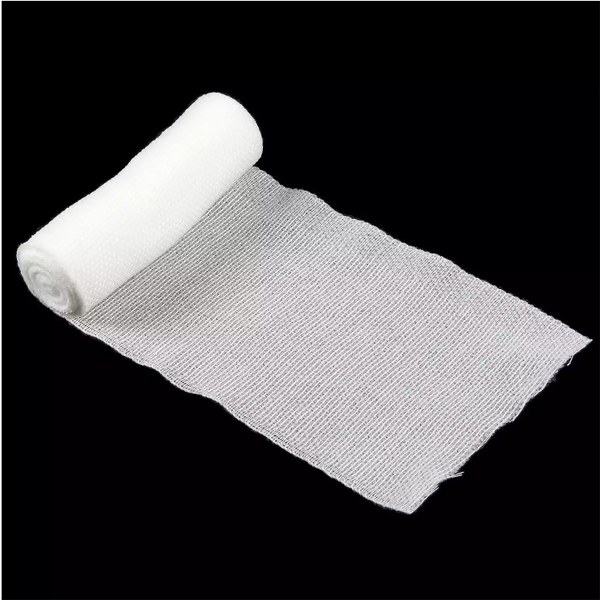
Moistening stuck gauze with saline solution is crucial for safe removal.
3. Should I Soak Gauze Stuck to a Wound? The Soaking Method Explained
Yes, absolutely! Soaking gauze stuck to a wound is the most recommended method to remove it safely and effectively. The soaking method works because it addresses the primary reason why gauze becomes stuck: the adhesion caused by dried wound fluids and entanglement with new tissue.
Why Soaking Works:
- Rehydrates Dried Exudate: Wound exudate, when dried, acts like glue, binding the gauze fibers to the wound. Soaking with saline solution rehydrates this dried material, dissolving the bonds and loosen the gauze.
- Softens Wound Bed: The saline solution also helps to soften the wound bed and surrounding skin, making the gauze easier to remove without damage the wound or causing further irritation.
- Reduces Pain: Removing gauze that is stuck without soaking can be incredibly painful. Soaking significantly reduces discomfort by minimizing the force needed to pull the gauze away.
- Minimizes Tissue Damage: Forceful gauze removal can tear delicate new tissue, reopening the wound and delaying wound healing. Soaking helps to gently separate the gauze from the tissue, promoting undisturbed healing.
How to Soak Effectively:
- Use the Right Solution: Saline solution is ideal because it is sterile and isotonic, meaning it won’t irritate the wound. Sterile water is a second-best option. Avoid using tap water, which may contain bacteria.
- Saturate the Gauze: Don’t just lightly dampen the gauze. You need to thoroughly saturate it so the solution penetrates to the area where the gauze has become stuck.
- Wait Patiently: Allow the saline solution to work for several minutes. The more firmly stuck gauze, the longer you might need to wait. Be patient and avoid attempting to remove the gauze too quickly.
- Gentle Assistance: While soaking, you can gently apply more saline solution using a cotton swab or syringe to target particularly stuck areas.
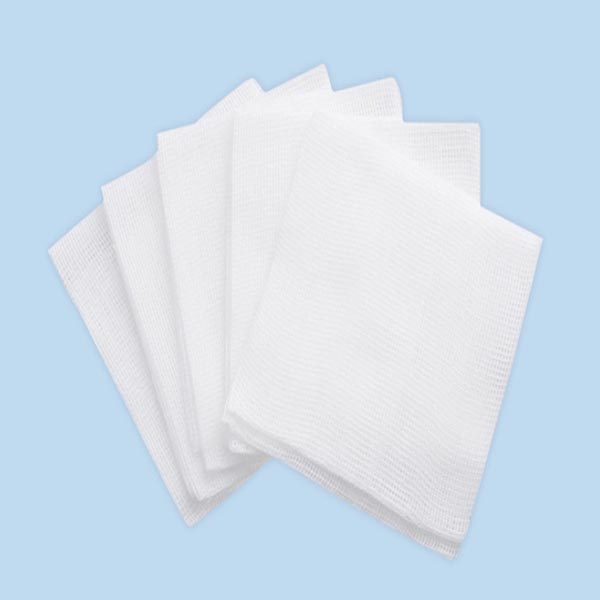
Using a cotton swab to apply saline solution directly to stuck areas.
4. Preventing Stuck Gauze: Choosing the Right Wound Dressing
Prevention is always better than cure, and when it comes to gauze stuck to a wound, choosing the right wound dressing from the start can make a big difference. While traditional cotton gauze is absorbent and useful, it’s more prone to sticking. Here’s how to minimize the likelihood of gauze sticking:
-
Non-Adherent Dressings: The best way to prevent gauze from sticking is to use non-adherent gauze. These dressings are specifically designed with a special coating or material that prevents them from adhering to the wound bed. They allow for exudate absorption while ensuring easier to remove without causing trauma. Non-stick gauze pads are readily available and are a worthwhile investment for proper wound care.
-
Consider Other Dressing Types: For some wounds, alternatives to traditional gauze might be even better at preventing sticking and promoting healing. These include:
- Hydrogel Dressings: These dressings provide moisture to the wound site, creating a moist wound environment that promotes healing and prevents gauze adhesion.
- Foam Dressings: Highly absorbent and conformable, foam dressings can be a good choice for wounds with moderate to heavy exudate. Some foam dressings also have a non-stick layer.
- Film Dressings: Transparent and waterproof, film dressings are suitable for minor wounds with minimal exudate. They are non-adherent and allow for wound observation without remove the dressing.
-
Barrier Layers: If you must use traditional gauze, consider applying a barrier layer between the gauze and the wound. A small amount of vaseline or a non-adherent ointment can create a protective layer that reduces the grip on the wound and makes gauze removal easier to remove.
-
Proper Wound Management: Proper wound management techniques also play a role. Keeping the wound area clean, changing dressings regularly (before they become overly saturated and dry), and avoiding letting the wound dry out completely can all help reduce the likelihood of gauze sticking.
By proactively choosing non-adherent gauze or alternative wound dressing types, and by practicing good wound management, you can significantly reduce the chances of experiencing the frustration and discomfort of gauze stuck to a wound.
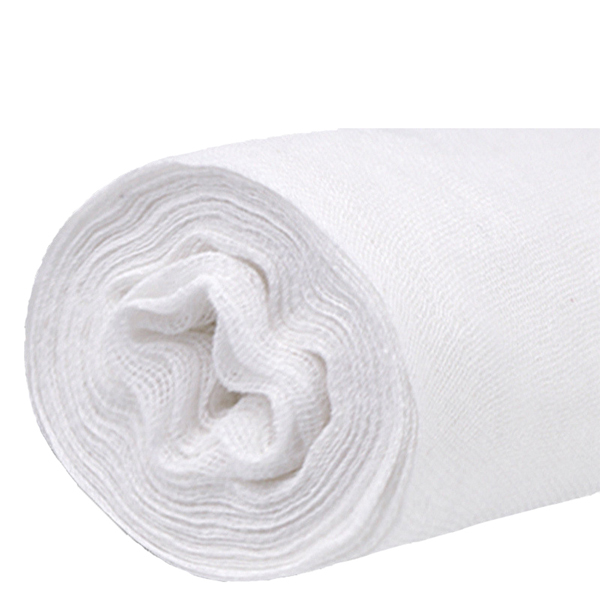
Choosing the right wound dressing can prevent gauze from sticking.
5. What Happens If You Leave Gauze Stuck to a Wound Too Long? Potential Risks
While it might seem like a minor inconvenience, leaving gauze in a wound for an extended period, especially if it’s stuck gauze, can lead to several potential complications. It’s important to address gauze stuck to a wound promptly and avoid leaving the gauze for longer than necessary.
Potential Risks of Leaving Gauze Stuck:
- Increased Risk of Infection: Gauze left in place too long, particularly if it’s moist and stuck to wound, can become a breeding ground for bacteria. This significantly increases the risk of developing an infected wound. Signs of infection include increased pain, redness around the wound, swelling, warmth, pus, and a foul odor.
- Delayed Wound Healing: Gauze adhesion can disrupt the wound healing process. When you eventually remove gauze stuck, it can tear away newly formed tissue, essentially setting back the healing progress. This can lead to prolonged healing times and potentially more noticeable scarring.
- Increased Pain and Discomfort: The longer gauze is stuck, the more firmly it is likely to adhere. This makes gauze removal more difficult and painful. Attempting to remove firmly stuck gauze can cause significant pain and further damage the wound.
- Tissue Damage: As mentioned, forceful gauze removal of stuck gauze can damage delicate wound tissue. This can range from minor irritation to reopening the wound and causing bleeding.
- Foreign Body Reaction: In rare cases, if fibers of the gauze are left behind in the wound after gauze removal, the body might react to them as foreign bodies, leading to inflammation and delayed healing.
Best Practice:
- Regular Dressing Changes: Follow your healthcare provider’s instructions on how often to remove the dressing and change your gauze pad. Regular changes prevent gauze from becoming overly stuck and reduce the risk of complications.
- Prompt Action: If you notice gauze is stuck, address it as soon as possible using the soaking method described earlier. Don’t ignore it or wait, hoping it will resolve on its own.
- Seek Professional Help: If you are unable to remove gauze stuck safely or if you notice signs of infection, seek medical advice promptly. A healthcare professional can safely remove the gauze and assess the wound for any complications.
6. Signs of Infection: When is Gauze Stuck to a Wound a Serious Problem?
While gauze stuck to a wound is often just an uncomfortable nuisance, it can sometimes be a sign of a more serious issue, particularly if it’s associated with an infected wound. Knowing the signs of infection is crucial to determine when gauze stuck to a wound requires medical attention.
Key Signs of Wound Infection:
- Increased Pain: Pain is normal with a wound, but if the pain intensifies or becomes throbbing, especially after gauze removal, it could be a sign of infection.
- Redness and Swelling: Some redness around the wound is expected, but spreading redness, increased warmth, and swelling are strong indicators of infection.
- Pus or Drainage: Thick, discolored drainage (yellow, green, or cloudy) or pus from the wound site is a classic sign of infection. Healthy wound drainage is usually clear or slightly pink.
- Foul Odor: An unpleasant or foul smell coming from the wound is a significant warning sign of bacterial infection.
- Fever: In more severe cases, a wound infection can cause a fever, chills, and general malaise.
- Delayed Healing: If the wound is not showing signs of improvement or is getting worse despite proper wound care, infection might be hindering the wound healing process.
Gauze Stuck and Infection:
- Gauze being left in place too long, especially if it becomes saturated with wound exudate, creates a moist, warm environment that bacteria thrive in. This increases the risk of infection.
- If gauze is stuck because of dried, infected wound drainage, it’s important to address the infection. Simply remove the gauze and redress the wound is not enough.
When to Seek Medical Help:
If you notice any of the signs of infection listed above, especially in combination with gauze stuck to a wound, it’s essential to consult a healthcare professional. They can:
- Assess the Wound: Determine if the wound is indeed infected and identify the type of infection if necessary.
- Safely Remove Gauze: Healthcare professionals are skilled in gauze removal and can manage even firmly stuck gauze with minimal trauma.
- Treat the Infection: Prescribe appropriate treatment, such as antibiotics, if the wound is infected.
- Provide Wound Care Guidance: Offer specific instructions on proper wound care to promote healing and prevent further complications.
Don’t hesitate to seek medical advice if you are concerned about a potentially infected wound or if you are struggling with gauze stuck to a wound. Early intervention can prevent more serious complications and ensure safe and effective wound care.
7. After Gauze Removal: Proper Wound Care for Optimal Healing
Once you’ve successfully managed to remove gauze from a wound, your wound care journey isn’t over. In fact, what you do after gauze removal is just as important for promoting wound healing and preventing complications. Here’s how to ensure proper wound care post-gauze removal:
-
Gentle Cleaning: Gently clean the wound immediately after gauze removal. Use saline solution to irrigate the wound site, removing any remaining debris or dried exudate. Avoid harsh soaps, hydrogen peroxide, or alcohol, as these can damage wound tissue and delay healing.
-
Pat Dry: After cleaning, pat the wound area dry with a clean, sterile gauze pad. Avoid rubbing, which can irritate the wound.
-
Apply Topical Ointment (Optional): Depending on the type of wound and your healthcare provider’s recommendations, you might apply a thin layer of topical antibiotic ointment or a wound healing ointment to keep the wound bed moist and prevent infection.
-
Choose the Right Dressing: For the new dressing, consider using non-adherent gauze to prevent gauze from sticking again. Ensure the dressing is appropriately sized to cover the entire wound and the skin around the wound. For larger wounds, consider using Medical Gauze Bandage Roll to secure the dressing effectively. You can find high-quality gauze in bulk at plastcare or similar suppliers.
-
Secure the Dressing: Make sure the dressing is securely in place but not too tight, which could restrict circulation. Use medical tape or a bandage to hold the dressing in position.
-
Regular Dressing Changes: Follow your healthcare provider’s instructions on how often to change your dressing. Typically, dressings should be changed daily or whenever they become wet, soiled, or saturated.
-
Monitor for Signs of Infection: Continue to monitor the wound for signs of infection at each dressing change. Be alert for increased pain, redness, swelling, pus, or foul odor.
-
Protect the Wound: Protect the wound from further injury or contamination. Avoid activities that could put stress on the wound or expose it to dirt or bacteria.
-
Healthy Lifestyle: Support wound healing from the inside out by maintaining a healthy diet rich in protein and vitamins, staying hydrated, and getting adequate rest.
By following these proper wound care steps after gauze removal, you can create an optimal environment for wound healing, minimize the risk of infection, and ensure a smoother recovery. Remember, consistent and careful wound management is key to successful healing.
8. Looking for Wound Gauze in Bulk? Find High-Quality Dressings at ZhongXing Medical
Are you a hospital procurement manager, a medical supply distributor, or a clinic administrator looking for reliable wound gauze in bulk? ZhongXing Medical is a professional medical device manufacturer based in China, specializing in high-quality disposable medical consumables. As a factory with 7 production lines, we are committed to providing top-notch products to meet your diverse needs.
We offer a comprehensive range of medical gauze products, including:
- Gauze Swabs: Available in various sizes and ply counts, both sterile and non-sterile options, like our Disposable gauze swab 40S 19*15mesh folded edge.
- Gauze Pads: Absorbent gauze pads for wound dressing and cleaning, including Sterile absorbent gauze pad.
- Gauze Rolls: Conforming gauze rolls for securing dressings and providing support, such as our Medical Gauze Bandage Roll 4cm*500cm for Wounding.
- Dental Cotton Rolls: High-quality dental cotton rolls for dental procedures, like Sterile Dental Cotton Rolls 1.5 Inch Rolled Cotton Pads.
- Cotton Swabs: Medical-grade cotton swabs for wound cleaning and application of medication, like Medical cotton swab 7.5CM disposable.
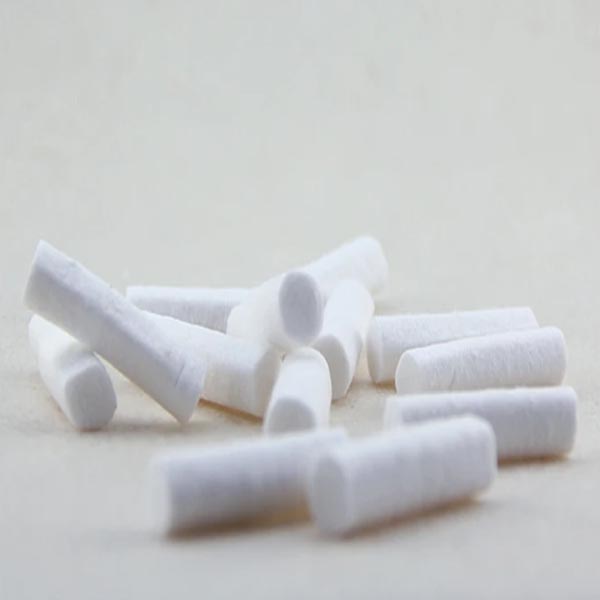
ZhongXing Medical offers a wide range of high-quality gauze products.
Why Choose ZhongXing Medical?
- High-Quality Materials: We use only high-quality medical-grade materials to ensure the safety and efficacy of our products.
- Sterile and Non-Sterile Options: We offer both sterile and non-sterile gauze products to meet different clinical requirements.
- Compliance and Certifications: Our products are compliant with relevant medical standards, including ISO 13485 and CE marking.
- B2B Focus: We cater to B2B customers, including hospitals, clinics, medical distributors, and government healthcare agencies.
- Global Export: We export to major markets, including the USA, North America, Europe, and Australia.
- Competitive Pricing: We offer competitive pricing without compromising on quality.
For your wound gauze in bulk needs, choose ZhongXing Medical. Contact us today to learn more about our product range and how we can meet your specific requirements. We are your reliable partner for safe and effective wound care supplies. You can also explore our range of other medical disposables like Medical bed sheet and Medical surgical face mask.
9. Non-Stick Gauze vs. Traditional Gauze: Which Dressing is Best for Wound Care?
When it comes to wound dressing, you have choices, and understanding the difference between non-stick gauze and traditional cotton gauze is crucial for making the best decision for wound care. Both types of gauze have their uses, but they are designed for different purposes and wound types.
Traditional Cotton Gauze:
- Pros:
- Highly Absorbent: Excellent for soaking up wound exudate, blood, and fluids.
- Cost-Effective: Generally less expensive than non-stick gauze.
- Versatile: Can be used for cleaning wounds, packing wounds, and as a primary or secondary dressing.
- Conformable: Easily conforms to different wound shapes and body contours.
- Cons:
- Adherent: Prone to sticking to the wound bed, especially as the wound dries.
- Painful Removal: Removing gauze that is stuck can be painful and damage the wound.
- May Leave Fibers: Can sometimes shed fibers of the gauze into the wound.
Non-Stick Gauze (Non-Adherent Gauze):
- Pros:
- Minimizes Adhesion: Designed to prevent sticking to the wound bed, ensuring easier to remove without trauma.
- Reduces Pain: Gauze removal is significantly less painful compared to traditional gauze.
- Promotes Undisturbed Healing: Less likely to disrupt new tissue growth during dressing changes.
- Available in Various Forms: Can come as pads, rolls, and impregnated with substances like petrolatum or antimicrobials.
- Cons:
- Less Absorbent Than Traditional Gauze: May not be ideal for heavily exuding wounds.
- More Expensive: Generally costs more than traditional gauze.
- May Still Stick Slightly: While designed to be non-adherent, they can still stick a little if the wound is very dry or if left in place for too long.
Which Dressing is Best?
- For Minor Wounds, Low Exudate: Non-stick gauze is often the better choice. It will protect the wound and allow for easier to remove without causing pain or disrupting healing.
- For Heavily Exuding Wounds: Traditional cotton gauze might be necessary for its high absorbency. However, consider using it as a secondary dressing over a non-adherent primary dressing layer that is in direct contact with the wound.
- For Pain-Sensitive Individuals: Non-stick gauze is highly recommended to minimize increased pain and discomfort during dressing changes.
- For Preventing Complications: Non-stick gauze reduces the risk of tissue damage during gauze removal and promotes a moist wound environment, which is conducive to healing.
In summary, while traditional cotton gauze has its place, non-stick gauze is generally preferred for most wound care situations due to its ability to minimize gauze adhesion, reduce pain, and promote undisturbed healing. Consider the specific needs of the wound and the patient when choosing between these two types of gauze.
10. Frequently Asked Questions About Gauze Stuck to Wounds
Q: Is it normal for gauze to stick to a wound?
A: Yes, it is common for traditional cotton gauze to become stuck to wounds, especially if the wound exudate dries and the gauze is in direct contact with the wound bed.
Q: What is the best way to remove gauze stuck to a wound?
A: The best method to remove gauze stuck to a wound is to soak it thoroughly with saline solution to loosen the gauze before gently peeling it away.
Q: Can I use tap water to soak gauze stuck to a wound?
A: While clean tap water can be used in an emergency, sterile saline solution is preferred as it is less likely to cause irritation or introduce bacteria.
Q: How can I prevent gauze from sticking to my wound in the future?
A: Use non-adherent gauze dressings, apply a barrier layer like vaseline, or consider alternative wound dressing types like hydrogel or foam dressings.
Q: What happens if I accidentally pull gauze away forcefully and it’s stuck?
A: Forceful gauze removal can cause painful and damage the wound, potentially reopening the wound or causing bleeding. If this happens, clean the wound gently and apply a new dressing. Monitor for signs of infection.
Q: When should I see a doctor if gauze is stuck to my wound?
A: Seek medical help if you cannot safely remove gauze stuck, if you notice signs of infection, or if you are concerned about the wound not healing properly.
Q: Can leaving gauze stuck to a wound cause infection?
A: Yes, leaving gauze in a wound for too long, especially if it’s moist and stuck gauze, can increase the risk of infected wound.
Q: Are non-stick gauze dressings more expensive?
A: Yes, non-stick gauze dressings are generally more expensive than traditional cotton gauze, but the benefits of reduced pain and trauma during gauze removal often outweigh the cost difference.
Q: Can I buy non-stick gauze at any pharmacy?
A: Yes, non-stick gauze pads and dressings are widely available at most pharmacies and drugstores.
Q: Where can I buy gauze in bulk for my clinic or hospital?
A: You can purchase wound gauze in bulk from medical supply manufacturers like ZhongXing Medical or distributors such as bulk at plastcare usa.
Key Takeaways:
- Gauze sticks to wounds due to the entanglement of gauze fibers with dried wound exudate and new tissue.
- Soaking gauze stuck to a wound with saline solution is the safest and most effective method to remove it.
- Non-adherent gauze dressings are the best way to prevent gauze from sticking.
- Leaving gauze stuck to a wound for too long can increase the risk of infection and delay healing.
- Monitor for signs of infection and seek medical help if you are concerned.
- Proper wound care after gauze removal is essential for optimal healing.
- ZhongXing Medical is a reliable source for high-quality wound gauze in bulk and other medical disposables.
By understanding why gauze gets stuck and how to manage it effectively, you can ensure safe and effective wound care for yourself and your patients, promoting faster healing and minimizing discomfort.
Post time: 2月-26-2025





